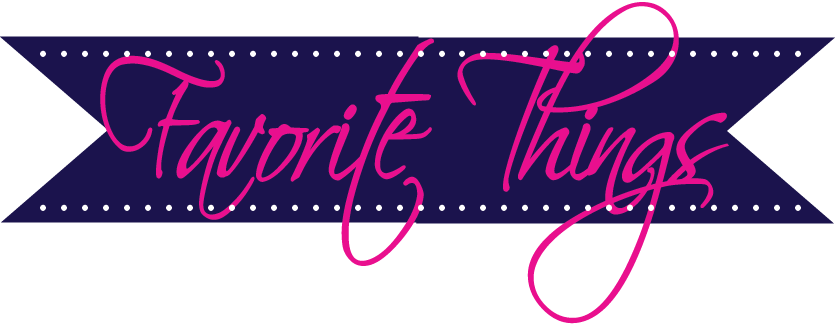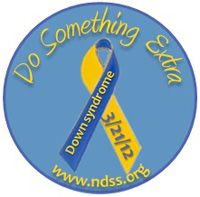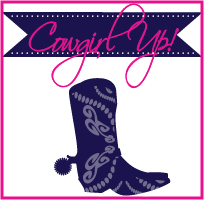One week from today is the day! Joey is going in for a tonsillectomy and adenoidectomy. This will be his sixth or seventh surgery (I can't believe I am losing track) before he turns three at the end of August.
I have tried to come up with every excuse in the book not to go through with it and to figure out a way to cancel it, but I can't. He's had too many stressful breathing situations when he gets sick. A case of Croup usually sends Joey into the hospital and sometimes it sends him in for a few nights. After his last eye surgery in June he had multiple scary breathing issues from the swelling in his throat from being intubated. He just doesn't have much room in there and when he gets sick it gets really hard for him to get enough oxygen. Add that to his congenital heart disease and we get completely freaked out when Super Joe can't breath.
The good news is that I have heard multiple stories of little ones coming through their T&A recovery without a lot of difficulty! The bad news is that none of those little ones I heard about have Down syndrome.
People with Down syndrome often have much smaller passages and airways. Because Joey hates taking any medicine (we will have to crush up his jr. ibuprofen and sneak it into yogurt) and because he is not able to verbalize most of his feelings, I expect that we will be facing some challenges following his procedure.
This is an excellent discussion on the issue of airway obstruction from the NDSS website:
Here you go- a mommy advice guide for T&A survival! Thank you so much Miss Anna for sharing your experiences with Ellie and her T&A journey!
I have tried to come up with every excuse in the book not to go through with it and to figure out a way to cancel it, but I can't. He's had too many stressful breathing situations when he gets sick. A case of Croup usually sends Joey into the hospital and sometimes it sends him in for a few nights. After his last eye surgery in June he had multiple scary breathing issues from the swelling in his throat from being intubated. He just doesn't have much room in there and when he gets sick it gets really hard for him to get enough oxygen. Add that to his congenital heart disease and we get completely freaked out when Super Joe can't breath.
 |
| Sleepy Joey. |
People with Down syndrome often have much smaller passages and airways. Because Joey hates taking any medicine (we will have to crush up his jr. ibuprofen and sneak it into yogurt) and because he is not able to verbalize most of his feelings, I expect that we will be facing some challenges following his procedure.
This is an excellent discussion on the issue of airway obstruction from the NDSS website:
AIRWAY OBSTRUCTION AND SLEEP APNEA
Airway obstruction is common in children with Down syndrome, with some studies suggesting that nearly all persons with Down syndrome have some form of sleep-related obstruction. Loss of sleep due to apnea and poor quality sleep due to sleep disordered breathing can result in sleepiness and disturbances in fine motor skills, and can also affect behavior and learning. Many people with sleep disorders fall asleep with passive activities such as riding in the car or school bus. Long term complications of sleep apnea include systemic hypertension, pulmonary hypertension, heart failure and even death.
Obstructive sleep apnea occurs when the airway is blocked during sleep. This can be caused by the small upper airway, large adenoids and tonsils, obesity, collapse of the airway due to hypotonia of the muscles of the throat, and increased secretions that can be characteristic of persons with Down syndrome. Obstruction can also occur from glossoptosis, a condition where a relatively large tongue falls back into a smaller airway during sleep.
Obstructive sleep apnea is often overlooked by caregivers and medical professionals, as sleep disturbances often occur unobserved or have been present for so long that parents assumed that was “normal” for their child.
A comprehensive clinical exam, X-ray, and thorough sleep study should be conducted if sleep apnea is suspected.
Airway obstruction can be treated both medically and surgically, and sometimes both treatments are necessary. Saline spray can keep the airway clear. Other medical options include the use of a Continuous Positive Airway Pressure (CPAP) machine during sleep, which provides some pressure with each breath, keeping the airway open while a person sleeps. Weight reduction may also help address sleep apnea. Surgically, removal of the tonsils and adenoids (T&A) is the first line of treatment of airway obstruction and sleep apnea in children with Down syndrome. Although removal of the tonsils and adenoids is usually curative of most sleep apnea in children, more recent studies suggest that this is not always the case with individuals with Down syndrome and further evaluation and treatment may be needed after T&A.
Tonsillectomy and Adenoidectomy Recovery Strategies for Children with Down Syndrome
I have been trying to talk to other moms and find some strategies for helping Joey recovery from his T&A surgery next week. One of Joey's friends just had the T&A surgery and did not eat for almost 8 days. His family relied on pediasure and Motrin to get him through. They also found that days 3-6 were much more difficult than days 1-2 post-surgery.
One mom I spoke to recommended that in addition to making sure to give Motrin on a regular schedule to also make sure that Joey has plenty of liquids so that he doesn't get "backed up" if you know what I mean on all the pain meds. I love that advice!!!
Finally, there is another mommy blogger over at The Chronicles of Ellie Bellie Bear (her daughter is simply GORGEOUS) and she is a nurse so she has some wonderful mommy with a degree advice. Please note-- this is not medical advice in any means-- it is just meant to be one parent's experience to help some of us other parents. Always consult with your physician for medical advice (instead of relying on the internet and Google like I often do).
Here you go- a mommy advice guide for T&A survival! Thank you so much Miss Anna for sharing your experiences with Ellie and her T&A journey!
1. The pain varies from individual to individual. It depends on just how "attached" the tonsils are to the throat. Some kids have huge wonking tonsils but they just hang by a thread. Other kids have smaller ones (or large ones) but they are firmly adhered to the throat by a whole lot of tissue. You will not know for sure how Super Joe's are until they actually remove them. As in, you cannot tell just by looking into the throat. . .
This is why some kiddos are bouncing off the walls two days later and why others (like my kiddo) moaned and groaned and laid around.
2. Hospitals have different rules around the US. Bear desatted a lot during sleepy time. 79-88%. She got to have some O2 on over night. Surprisingly, they let her go home. It was up to the doctor and the thought was Bear was oxygenating low pre-surgery so let the poor kid recover at home. At CHOP, kids have to be satting >95% without oxygen even when asleep. This can lead to living in the hospital for a few days. Honestly, if we had been at CHOP, we would still be there. . . okay I am exaggerating but we would have been there a few days at least. My thought is to charge the iPad, bring the charge, bring spare clothes. (KEY MOMMY POINTS!!!)
3. The more hydrated the child is, the easier the recovery.
When they remove the tonsils and the adenoid, scabs will form. Keeping those scabs moist decreases pain. Hydration also prevents trips to the ER due to dehydration. Fluids include semi-solids too--think ice cream and apple sauce. I had this kiddo chugging apple sauce because she wouldn't drink anything else. STRAWS--okay some docs say no to straws after T&A while others say no restrictions. (just as some say they can go to therapies when feeling better while others say no for 2 weeks).
4. The 5-10 Day Mark:
As with any scab, it will fall off--this occurs 5-10 days post op. When the scabs fall off, it hurts and there is a risk for bleeding. This why kiddos often need an increase in pain meds. That being said, some kids are running around like wild banshees and you would never know that the scabs fell off.
As with any scab, it will fall off--this occurs 5-10 days post op. When the scabs fall off, it hurts and there is a risk for bleeding. This why kiddos often need an increase in pain meds. That being said, some kids are running around like wild banshees and you would never know that the scabs fell off.
With Ellie, on day 6 she slept. A LOT. I think she was only up for 6 hours total. She also wouldn't drink. That was the only day she would not drink. That was the day she lost most of her scabs. She lost the rest after week 3.
5. MUCUS or SNOT or DROOL or all of the above
It will be thick. Really thick. And copious. Surgery is surgery and as you already know, cutting into tissues is trauma and trauma leads to swelling and fluids. Expect to see some snot for several weeks post-op. Expect to hear some snoring as well--remember the swelling.
It will be thick. Really thick. And copious. Surgery is surgery and as you already know, cutting into tissues is trauma and trauma leads to swelling and fluids. Expect to see some snot for several weeks post-op. Expect to hear some snoring as well--remember the swelling.
6. Don't forget the iPad and spare clothes. A few sets.
You know what is fun? Post op emesis (vomiting). What is even more fun is dried blood post-op emesis. Right after you change into the bedtime clothes. Bring several shirts. Between the ice cream, the snot, the drooling, and the vomiting, you will want something semi-clean and non-smelly to sleep in. I learned this the hard way. The iPad is so that you can google everything that looks funky. Or to play Signing Time over and over and over again to keep Super Joe calm
7. This may be the most important one for pain and recovery: CHEW CHEW CHEW.
I know this sounds strange but you want to keep the jaw, cheeks, and neck muscles loose and relaxed. Especially the neck. Tensing up will increase the pain. Relaxation helps with healing. Gummies, fruit snacks, whatever to move those muscles. Like you mentioned in your post--I avoided all red items--red juices, red pedialyte, red gummies, red jello.
Super Joe's doctor wants him to take a break from all of his therapies for the two weeks following his surgery. In the meantime, we are trying to LIVE IT UP before his next adventure!!! This past weekend, this meant a day at the Summit County Fair (thank you Jennifer M. for telling me it was going on!).
I know this sounds strange but you want to keep the jaw, cheeks, and neck muscles loose and relaxed. Especially the neck. Tensing up will increase the pain. Relaxation helps with healing. Gummies, fruit snacks, whatever to move those muscles. Like you mentioned in your post--I avoided all red items--red juices, red pedialyte, red gummies, red jello.
 |
| Joey is now up to five different types of therapy: PT, OT, Speech, Horse and Swimming!!!! He really loves his Horse and Swimming therapy, tends to be a little bit ornery in OT and Speech and often ends his PT sessions in tears from working so hard. He makes us so proud at each session- even when he is not feeling well he tries his hardest! |
Growing up in Western Nebraska there was one time of year that was more than special, more than awesome-- it was magical. It was the Box Butte County Fair. I remember driving over there with my Grandma Freimuth while she entered a photograph, a painting or a baked good into the fair. I remember attending rodeos and watching the older cowboys and cowgirls ride horses and lasso cattle. The memories are a little fuzzy and vague, but this weekend's trip to the fair brought it all back home. What memories are you working on this summer?
 |
| Joey going after Daddy's caramel apple. |
 |
| Tommy showed off some serious, mad dart skills. Is he going to be an expert at parlor games like his dad? |
 |
| Joey has become very fond of horses after his sessions at Victory Gallop. He didn't understand why he couldn't ride the horses at the fair. |
 |
| Learned my lesson on this one- I was staring too long at this beautiful bird when its owner came over and offered to give me a better look at it while I took its picture. Yikes! |
 |
| The "Fun Slide". |
 |
| My favorite ride!!! The helicopter. The four of us all got to go on it together. |
Have a wonderful weekend!!!





























Oh my word--you take great photos! Remember to charge the iPad! Or at least your phone. Or something with a touch screen that has apps! Lots of clothes--for you. I didn't. I thought that I was so clever bringing a spare shirt and then clothes for sleeping. Let's just say I slept in grubby clothes because I was not prepared. Thanks for tagging me in the post. I hope that some of those strategies help you and others going down this road. I also pray that the surgery and recovery go smoothly for our little Super Joe!
ReplyDeleteThose are great pics! I will be praying for Super Joe next week! Forgot to mention that Alex did miss all his therapies for 2 weeks after surgery as well. He's still trying to get back to where he was, but he's getting there slowly. Best wishes to all of you!
ReplyDeleteMargaret:)